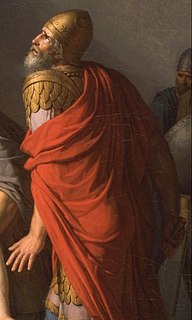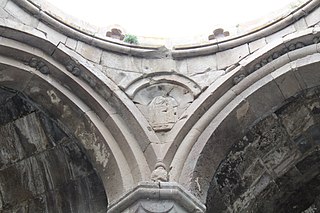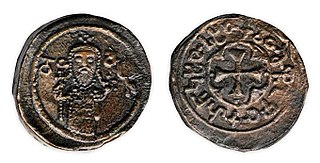| Georgian monarchs family tree of Bagrationi dynasty [1] | |||||||||||||||||||||||||||||||||||||||||||||||||||||||||||||||||||||||||||||||||||||||||||||||||||||||||||||||||||||||||||||||||||||||||||||||||||||||||||||||||||||||||||||||||||||||||||||||||||||||||||||||||||||||||||||||||||||||||||||||||||||||||||||||||||||||||||||||||||||||||||||||||||||||||||||||||||||||||||||||||||||||||||||||||||||||||||||||||||||||||||||||||||||||||||||||||||||||||||||||||||||||||||||||||||||||||||||||||||||||||||||||||||||||||||||||||||||||||||||||||||||||||||||||||||||||||||||||||||||||||||||||||||||||||||||||||||||||||||||||||||||||||||||||||||||||||||||||||||||||||||||||||||||||||||||||||||||||||||||||||||||||||||||||||||||||||||||||||||||||||||||||||||||||||||||||||||||||||||||||||||||||||||||||||||||||||||||||||||||||||||||||||||||||||||||||||||||||||||||||||||||||||||||||||||||||||||||||||||||||||||||||||||||||||||||||||||||||||||||||||||||||||||||||||||||||||||||||||||||||||||||||||||||||||||||||||||||||||||||||||||||||||||||||||||||||||||||||||||||||
|---|---|---|---|---|---|---|---|---|---|---|---|---|---|---|---|---|---|---|---|---|---|---|---|---|---|---|---|---|---|---|---|---|---|---|---|---|---|---|---|---|---|---|---|---|---|---|---|---|---|---|---|---|---|---|---|---|---|---|---|---|---|---|---|---|---|---|---|---|---|---|---|---|---|---|---|---|---|---|---|---|---|---|---|---|---|---|---|---|---|---|---|---|---|---|---|---|---|---|---|---|---|---|---|---|---|---|---|---|---|---|---|---|---|---|---|---|---|---|---|---|---|---|---|---|---|---|---|---|---|---|---|---|---|---|---|---|---|---|---|---|---|---|---|---|---|---|---|---|---|---|---|---|---|---|---|---|---|---|---|---|---|---|---|---|---|---|---|---|---|---|---|---|---|---|---|---|---|---|---|---|---|---|---|---|---|---|---|---|---|---|---|---|---|---|---|---|---|---|---|---|---|---|---|---|---|---|---|---|---|---|---|---|---|---|---|---|---|---|---|---|---|---|---|---|---|---|---|---|---|---|---|---|---|---|---|---|---|---|---|---|---|---|---|---|---|---|---|---|---|---|---|---|---|---|---|---|---|---|---|---|---|---|---|---|---|---|---|---|---|---|---|---|---|---|---|---|---|---|---|---|---|---|---|---|---|---|---|---|---|---|---|---|---|---|---|---|---|---|---|---|---|---|---|---|---|---|---|---|---|---|---|---|---|---|---|---|---|---|---|---|---|---|---|---|---|---|---|---|---|---|---|---|---|---|---|---|---|---|---|---|---|---|---|---|---|---|---|---|---|---|---|---|---|---|---|---|---|---|---|---|---|---|---|---|---|---|---|---|---|---|---|---|---|---|---|---|---|---|---|---|---|---|---|---|---|---|---|---|---|---|---|---|---|---|---|---|---|---|---|---|---|---|---|---|---|---|---|---|---|---|---|---|---|---|---|---|---|---|---|---|---|---|---|---|---|---|---|---|---|---|---|---|---|---|---|---|---|---|---|---|---|---|---|---|---|---|---|---|---|---|---|---|---|---|---|---|---|---|---|---|---|---|---|---|---|---|---|---|---|---|---|---|---|---|---|---|---|---|---|---|---|---|---|---|---|---|---|---|---|---|---|---|---|---|---|---|---|---|---|---|---|---|---|---|---|---|---|---|---|---|---|---|---|---|---|---|---|---|---|---|---|---|---|---|---|---|---|---|---|---|---|---|---|---|---|---|---|---|---|---|---|---|---|---|---|---|---|---|---|---|---|---|---|---|---|---|---|---|---|---|---|---|---|---|---|---|---|---|---|---|---|---|---|---|---|---|---|---|---|---|---|---|---|---|---|---|---|---|---|---|---|---|---|---|---|---|---|---|---|---|---|---|---|---|---|---|---|---|---|---|---|---|---|---|---|---|---|---|---|---|---|---|---|---|---|---|---|---|---|---|---|---|---|---|---|---|---|---|---|---|---|---|---|---|---|---|---|---|---|---|---|---|---|---|---|---|---|---|---|---|---|---|---|---|---|---|---|---|---|---|---|---|---|---|---|---|---|---|---|---|---|---|---|---|---|---|---|---|---|---|---|---|---|---|---|---|---|---|---|---|---|---|---|---|---|---|---|---|---|---|---|---|---|---|---|---|---|---|---|---|---|---|---|---|---|---|---|---|---|---|---|---|---|---|---|---|---|---|---|---|---|---|---|---|---|---|---|---|---|---|---|---|---|---|---|---|---|---|---|---|---|---|---|---|---|---|---|---|---|---|---|---|---|---|---|---|---|---|---|---|---|---|---|---|---|---|---|---|---|---|---|---|---|---|---|---|---|---|---|---|---|---|---|---|---|---|---|---|---|---|---|---|---|---|---|---|---|---|---|---|---|---|---|---|---|---|---|---|---|---|---|---|---|---|---|---|---|---|---|---|---|---|---|---|---|---|---|---|---|---|---|---|---|---|---|---|---|---|---|---|---|---|---|---|---|---|---|---|---|---|---|---|---|---|---|---|---|---|---|---|---|---|---|---|---|---|---|---|---|---|---|---|---|---|---|---|---|---|---|---|---|---|---|---|---|---|---|---|---|---|---|---|---|---|---|---|---|---|---|---|---|---|---|---|---|---|---|---|---|---|---|---|---|---|---|---|---|---|---|---|---|---|---|---|---|---|---|---|---|---|---|---|---|---|---|---|---|---|---|---|---|---|---|---|---|---|---|---|---|---|---|---|---|---|---|---|---|---|---|---|---|---|---|---|---|---|---|---|---|---|---|---|---|---|---|---|---|---|---|
| |||||||||||||||||||||||||||||||||||||||||||||||||||||||||||||||||||||||||||||||||||||||||||||||||||||||||||||||||||||||||||||||||||||||||||||||||||||||||||||||||||||||||||||||||||||||||||||||||||||||||||||||||||||||||||||||||||||||||||||||||||||||||||||||||||||||||||||||||||||||||||||||||||||||||||||||||||||||||||||||||||||||||||||||||||||||||||||||||||||||||||||||||||||||||||||||||||||||||||||||||||||||||||||||||||||||||||||||||||||||||||||||||||||||||||||||||||||||||||||||||||||||||||||||||||||||||||||||||||||||||||||||||||||||||||||||||||||||||||||||||||||||||||||||||||||||||||||||||||||||||||||||||||||||||||||||||||||||||||||||||||||||||||||||||||||||||||||||||||||||||||||||||||||||||||||||||||||||||||||||||||||||||||||||||||||||||||||||||||||||||||||||||||||||||||||||||||||||||||||||||||||||||||||||||||||||||||||||||||||||||||||||||||||||||||||||||||||||||||||||||||||||||||||||||||||||||||||||||||||||||||||||||||||||||||||||||||||||||||||||||||||||||||||||||||||||||||||||||||||||
| Georgian monarchs family tree of Bagrationi dynasty [1] | |||||||||||||||||||||||||||||||||||||||||||||||||||||||||||||||||||||||||||||||||||||||||||||||||||||||||||||||||||||||||||||||||||||||||||||||||||||||||||||||||||||||||||||||||||||||||||||||||||||||||||||||||||||||||||||||||||||||||||||||||||||||||||||||||||||||||||||||||||||||||||||||||||||||||||||||||||||||||||||||||||||||||||||||||||||||||||||||||||||||||||||||||||||||||||||||||||||||||||||||||||||||||||||||||||||||||||||||||||||||||||||||||||||||||||||||||||||||||||||||||||||||||||||||||||||||||||||||||||||||||||||||||||||||||||||||||||||||||||||||||||||||||||||||||||||||||||||||||||||||||||||||||||||||||||||||||||||||||||||||||||||||||||||||||||||||||||||||||||||||||||||||||||||||||||||||||||||||||||||||||||||||||||||||||||||||||||||||||||||||||||||||||||||||||||||||||||||||||||||||||||||||||||||||||||||||||||||||||||||||||||||||||||||||||||||||||||||||||||||||||||||||||||||||||||||||||||||||||||||||||||||||||||||||||||||||||||||||||||||||||||||||||||||||||||||||||||||||||||||||
|---|---|---|---|---|---|---|---|---|---|---|---|---|---|---|---|---|---|---|---|---|---|---|---|---|---|---|---|---|---|---|---|---|---|---|---|---|---|---|---|---|---|---|---|---|---|---|---|---|---|---|---|---|---|---|---|---|---|---|---|---|---|---|---|---|---|---|---|---|---|---|---|---|---|---|---|---|---|---|---|---|---|---|---|---|---|---|---|---|---|---|---|---|---|---|---|---|---|---|---|---|---|---|---|---|---|---|---|---|---|---|---|---|---|---|---|---|---|---|---|---|---|---|---|---|---|---|---|---|---|---|---|---|---|---|---|---|---|---|---|---|---|---|---|---|---|---|---|---|---|---|---|---|---|---|---|---|---|---|---|---|---|---|---|---|---|---|---|---|---|---|---|---|---|---|---|---|---|---|---|---|---|---|---|---|---|---|---|---|---|---|---|---|---|---|---|---|---|---|---|---|---|---|---|---|---|---|---|---|---|---|---|---|---|---|---|---|---|---|---|---|---|---|---|---|---|---|---|---|---|---|---|---|---|---|---|---|---|---|---|---|---|---|---|---|---|---|---|---|---|---|---|---|---|---|---|---|---|---|---|---|---|---|---|---|---|---|---|---|---|---|---|---|---|---|---|---|---|---|---|---|---|---|---|---|---|---|---|---|---|---|---|---|---|---|---|---|---|---|---|---|---|---|---|---|---|---|---|---|---|---|---|---|---|---|---|---|---|---|---|---|---|---|---|---|---|---|---|---|---|---|---|---|---|---|---|---|---|---|---|---|---|---|---|---|---|---|---|---|---|---|---|---|---|---|---|---|---|---|---|---|---|---|---|---|---|---|---|---|---|---|---|---|---|---|---|---|---|---|---|---|---|---|---|---|---|---|---|---|---|---|---|---|---|---|---|---|---|---|---|---|---|---|---|---|---|---|---|---|---|---|---|---|---|---|---|---|---|---|---|---|---|---|---|---|---|---|---|---|---|---|---|---|---|---|---|---|---|---|---|---|---|---|---|---|---|---|---|---|---|---|---|---|---|---|---|---|---|---|---|---|---|---|---|---|---|---|---|---|---|---|---|---|---|---|---|---|---|---|---|---|---|---|---|---|---|---|---|---|---|---|---|---|---|---|---|---|---|---|---|---|---|---|---|---|---|---|---|---|---|---|---|---|---|---|---|---|---|---|---|---|---|---|---|---|---|---|---|---|---|---|---|---|---|---|---|---|---|---|---|---|---|---|---|---|---|---|---|---|---|---|---|---|---|---|---|---|---|---|---|---|---|---|---|---|---|---|---|---|---|---|---|---|---|---|---|---|---|---|---|---|---|---|---|---|---|---|---|---|---|---|---|---|---|---|---|---|---|---|---|---|---|---|---|---|---|---|---|---|---|---|---|---|---|---|---|---|---|---|---|---|---|---|---|---|---|---|---|---|---|---|---|---|---|---|---|---|---|---|---|---|---|---|---|---|---|---|---|---|---|---|---|---|---|---|---|---|---|---|---|---|---|---|---|---|---|---|---|---|---|---|---|---|---|---|---|---|---|---|---|---|---|---|---|---|---|---|---|---|---|---|---|---|---|---|---|---|---|---|---|---|---|---|---|---|---|---|---|---|---|---|---|---|---|---|---|---|---|---|---|---|---|---|---|---|---|---|---|---|---|---|---|---|---|---|---|---|---|---|---|---|---|---|---|---|---|---|---|---|---|---|---|---|---|---|---|---|---|---|---|---|---|---|---|---|---|---|---|---|---|---|---|---|---|---|---|---|---|---|---|---|---|---|---|---|---|---|---|---|---|---|---|---|---|---|---|---|---|---|---|---|---|---|---|---|---|---|---|---|---|---|---|---|---|---|---|---|---|---|---|---|---|---|---|---|---|---|---|---|---|---|---|---|---|---|---|---|---|---|---|---|---|---|---|---|---|---|---|---|---|---|---|---|---|---|---|---|---|---|---|---|---|---|---|---|---|---|---|---|---|---|---|---|---|---|---|---|---|---|---|---|---|---|---|---|---|---|---|---|---|---|---|---|---|---|---|---|---|---|---|---|---|---|---|---|---|---|---|---|---|---|---|---|---|---|---|---|---|---|---|---|---|---|---|---|---|---|---|---|---|---|---|---|---|---|---|---|---|---|---|---|---|---|---|---|---|---|---|---|---|---|---|---|---|---|---|---|---|---|---|---|---|---|---|---|---|---|---|---|---|---|---|---|---|---|---|---|---|---|---|---|---|---|---|---|---|---|---|---|---|---|---|---|---|---|---|---|---|---|---|
| |||||||||||||||||||||||||||||||||||||||||||||||||||||||||||||||||||||||||||||||||||||||||||||||||||||||||||||||||||||||||||||||||||||||||||||||||||||||||||||||||||||||||||||||||||||||||||||||||||||||||||||||||||||||||||||||||||||||||||||||||||||||||||||||||||||||||||||||||||||||||||||||||||||||||||||||||||||||||||||||||||||||||||||||||||||||||||||||||||||||||||||||||||||||||||||||||||||||||||||||||||||||||||||||||||||||||||||||||||||||||||||||||||||||||||||||||||||||||||||||||||||||||||||||||||||||||||||||||||||||||||||||||||||||||||||||||||||||||||||||||||||||||||||||||||||||||||||||||||||||||||||||||||||||||||||||||||||||||||||||||||||||||||||||||||||||||||||||||||||||||||||||||||||||||||||||||||||||||||||||||||||||||||||||||||||||||||||||||||||||||||||||||||||||||||||||||||||||||||||||||||||||||||||||||||||||||||||||||||||||||||||||||||||||||||||||||||||||||||||||||||||||||||||||||||||||||||||||||||||||||||||||||||||||||||||||||||||||||||||||||||||||||||||||||||||||||||||||||||||||

Tamar the Great reigned as the Queen of Georgia from 1184 to 1213, presiding over the apex of the Georgian Golden Age. A member of the Bagrationi dynasty, her position as the first woman to rule Georgia in her own right was emphasized by the title mepe ("king"), afforded to Tamar in the medieval Georgian sources.

In Greco-Roman geography, Iberia was an exonym for the Georgian kingdom of Kartli, known after its core province, which during Classical Antiquity and the Early Middle Ages was a significant monarchy in the Caucasus, either as an independent state or as a dependent of larger empires, notably the Sassanid and Roman empires. Iberia, centered on present-day Eastern Georgia, was bordered by Colchis in the west, Caucasian Albania in the east and Armenia in the south.

The Knight in the Panther's Skin is a Georgian medieval epic poem, written in the 12th century by Georgia's national poet Shota Rustaveli. A definitive work of the Georgian Golden Age, the poem consists of over 1600 Rustavelian Quatrains and is considered to be a "masterpiece of the Georgian literature". Until the early 20th century, a copy of this poem was part of the dowry of every bride.

David IV, also known as David the Builder (1073–1125), of the Bagrationi dynasty, was the 5th king of United Georgia from 1089 until his death in 1125.

Pharnavaz I was a king of Kartli, an ancient Georgian kingdom known as Iberia in classical antiquity. The Georgian Chronicles credits him with being the first monarch founding the kingship of Kartli and the Pharnavazid dynasty, while other independent chronicles, such as The Conversion of Kartli make him the second Georgian monarch. Based on the medieval evidence, most scholars locate Pharnavaz's rule in the 3rd century BC: 302–237 BC according to Prince Vakhushti of Kartli, 299–234 BC according to Cyril Toumanoff and 284–219 BC according to Pavle Ingoroqva. Pharnavaz's rise, advent and imperial expansion of the Iberian monarchy was directly tied to the victory of Alexander the Great over the Achaemenid Empire. Pharnavaz ruled under the suzerainty of the Seleucid Empire.

The Georgians, or Kartvelians, are a nation and indigenous Caucasian ethnic group native to Georgia and the South Caucasus. Large Georgian communities are also present throughout Russia, Turkey, Greece, Iran, Ukraine, the United States and European Union.

Bagrat IV, of the Bagrationi dynasty, was the King of Georgia from 1027 to 1072. During his long and eventful reign, Bagrat sought to repress the great nobility and to secure Georgia's sovereignty from the Byzantine and Seljuq Empires. In a series of intermingled conflicts, Bagrat succeeded in defeating his most powerful vassals and rivals of the Liparitid family, bringing several feudal enclaves under his control, and reducing the kings of Lorri and Kakheti, as well as the emir of Tbilisi to vassalage. Like many medieval Caucasian rulers, he bore several Byzantine titles, particularly those of nobelissimos, curopalates, and sebastos.
Maria of Alania was Byzantine empress by marriages to emperors Michael VII Doukas and Nikephoros III Botaneiates.

Borena was a sister of the Alan king Durgulel "the Great", and the Queen consort of Georgia, as the second wife of Bagrat IV.

Pharasmanes I was a king of Iberia. He plays a prominent role in the historian Tacitus’ account of policy and campaigns in the eastern Roman Empire under Tiberius, Caligula, Claudius and Nero. According to Cyril Toumanoff, Pharasmanes was a member of the third Pharnavazid dynasty and reigned from 1 to 58. Pharasmanes is mentioned on the Stele of Vespasian. During his reign, Iberia was transformed into the Transcaucasian empire, that would dominate the kingdoms of Armenia and Albania.

The Kingdom of Georgia, also known as the Georgian Empire, was a medieval Eurasian monarchy that was founded in circa 1008 AD. It reached its Golden Age of political and economic strength during the reign of King David IV and Queen Tamar the Great from 11th to 13th centuries. Georgia became one of the pre-eminent nations of the Christian East and its pan-Caucasian empire and network of tributaries stretching from Eastern Europe to Anatolia and northern frontiers of Iran, while also maintaining religious possessions abroad, such as the Monastery of the Cross in Jerusalem and the Monastery of Iviron in Greece. It was the principal historical precursor of present-day Georgia.
Mariam, was a Georgian queen and regent. She was the daughter of John-Senekerim Artsruni, an Armenian king of Vaspurakan, and the first consort of the king George I of Georgia. As a dowager queen of Georgia, she ruled as regent for her underage son, Bagrat IV, from 1027 to 1037, and was involved in diplomacy with the Byzantine Empire.

Mariam Dadiani was a daughter of Manuchar I Dadiani, Prince of Mingrelia, by his second wife, Tamar Jaqeli. Thrice married, successively to Simon I Gurieli, Prince of Guria, in 1621, King Rostom of Kartli in 1638, and the latter's adopted son and successor, King Vakhtang V in 1658.

Sasanian Iberia refers to the period the Kingdom of Iberia was under the suzerainty of the Sasanian Empire. The period includes when it was ruled by Marzbans (governors) appointed by the Sasanid Iranian king, and later through the Principality of Iberia.

The Christianization of Iberia refers to the spread of Christianity in the early 4th century by the sermon of Saint Nino in an ancient Georgian kingdom of Kartli, known as Iberia in classical antiquity, which resulted in declaring it as a state religion by then-pagan King Mirian III of Iberia. Per Sozomen, this led the king's "large and warlike barbarian nation to confess Christ and renounce the religion of their fathers", as the polytheistic Georgians had long-established anthropomorphic idols, known as the "Gods of Kartli". The king would become the main sponsor, architect, initiator and an organizing power of all building processes. Per Socrates of Constantinople, the "Iberians first embraced the Christian faith" alongside the Abyssinians, but most probably Kartli would become a second state after the Kingdom of Armenia, its longtime southern neighbor, that officially embraced the new religion. Armenian and Georgian monarchs were among the first anywhere in the world to convert to a Christian faith. Prior to the escalation of Armeno-Georgian ecclesiastical rivalry and the christological controversies their Caucasian Christianity was extraordinarily inclusive, pluralistic and flexible that only saw the rigid ecclesiological hierarchies established much later, particularly as "national" churches crystallized from the 6th century. Despite the tremendous diversity of the region, the christianization process was a pan-regional and a cross-cultural phenomenon in the Caucasus, Eurasia's most energetic and cosmopolitan zones throughout the late antiquity, hard enough to place Georgians and Armenians unequivocally within any one major civilization. The Jews of Mtskheta, the royal capital of Kartli, that did play a significant role in the Christianization of the kingdom, would give a strong impetus to deepen the ties between the Georgian monarchy and the Holy Land leading to an increasing presence of Georgians in Palestine, as the activities of Peter the Iberian and other pilgrims confirm, including the oldest attested Georgian Bir el Qutt inscriptions found in the Judaean Desert alongside the pilgrim graffiti of Nazareth and Sinai.

Gurandukht or Guarandukht was a queen of Kartli by marriage to Gurgen of Kartli, and regent during the minority of her son from 975. She was a daughter of King George II of Abkhazia and wife of the Bagratid royal Gurgen of Kartli.

The style of the Georgian sovereign refers to the formal mode of address to a Georgian monarch (mepe) that evolved and changed many times since the establishment of the ancient Kingdom of Iberia, its transformation to the unified Kingdom of Georgia and its successive monarchies after the disintegration of the realm.

The triarchy and collapse of the Kingdom of Georgia was a dynastic triumvirate military conflict of the Bagrationi monarchs and war of succession in the united Georgian kingdom during the second half of the 15th century. Beginning under the reign of King George VIII, it continued under Bagrat VI and Constantine II and included the entire country, with clashes all around the realm.

The unification of the Georgian realm was the 10th-century political movement that resulted in the consolidation of various Georgian Crowns into a single realm with centralized government in 1008, the Kingdom of Georgia, or Sakartvelo. Originally initiated by the powerful local aristocracy of the eristavs, due to centuries-long power struggles and aggressive wars of succession between the Georgian monarchs, arising from their independent ruling traditions of classical antiquity and its Hellenistic-era monarchical establishments in Colchis and Iberia. The initiative was supported by David III the Great of the Bagrationi dynasty, the most powerful ruler in the Caucasus at the time, who would put prince royal Bagrat, his kin and foster-son, on Iberian throne, who would eventually be crowned as a King of all-Georgia. David's Bagratid successors would become the champions of national unification, just like the Rurikids or the Capetians, but despite their enthusiasm, some of the Georgian polities that had been targeted for unification did not join the unification freely and would actively fight against it throughout this process, mostly seeking help and support from the Byzantine Empire and the Abbasid Caliphate. Even though, 1008 unification of the realm would unite most of western and central Georgian lands, the process will continue to the east, and eventually, would reach its total completion under King David IV the Builder. This unprecedented political unification of lands and the meteoric rise of Bagrationi power would inaugurate the Georgian Golden Age and creation of the only medieval pan-Caucasian empire attaining its greatest geographical extent, that would dominate entire Caucasus in the 11th, 12th, and 13th centuries. The centralizing power of the crown started to weaken in the 14th century, and even though the tide turned back under King George V the Brilliant, the reunification came up to be short-lived; unified realm would evaporate after invasions of Mongols and Timur that would result in its total collapse in the 15th century.